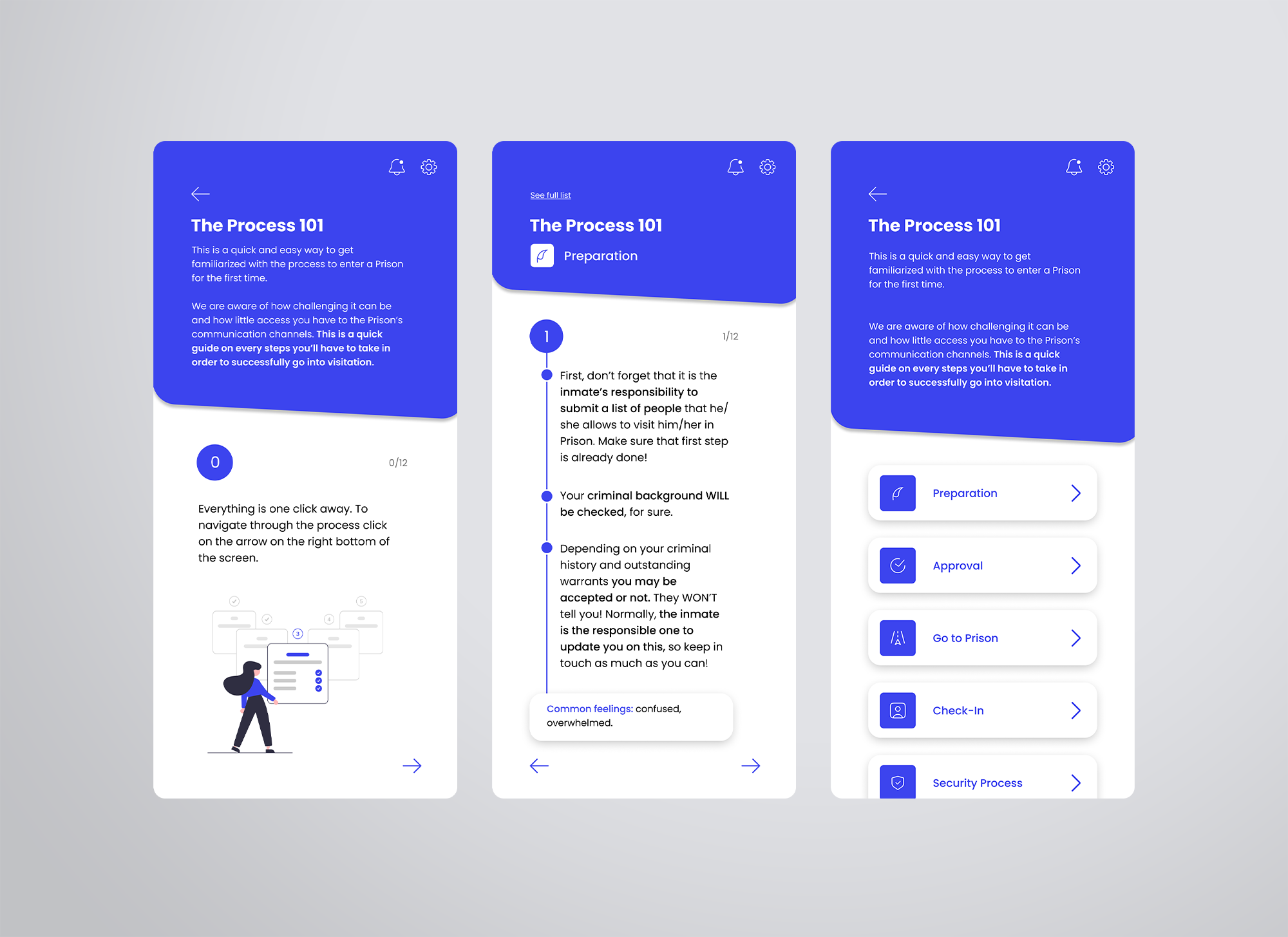THE CONCEPT.
CAÔ is a digital solution that is able to use Design as a way to anticipate the strong and overwhelming feelings of visiting someone in prison for the first time while improving visitors’ experience and helping them to cope with their anxiety.
“Even if inmates live with hundreds of other people, in these conditions, this population is still more likely to be a mass of isolates than a social group.”
— Sykes, 2007
#1
IT GIVES A SENSE OF NORMALITY DURING THE SENTENCE FOR BOTH OF THE PARTIES INVOLVED.
#2
SOCIAL INTERACTIONS ARE PROVIDED, WHICH ARE CONSIDERED INTEGRAL TO MAINTAIN HEALTHY WELL-BEING.
#3
THEY ARE ONE OF THE FEW OPPORTUNITIES FOR INMATES AND VISITORS TO MAINTAIN AND NOURISH RELATIONSHIPS.
#4
TO REDUCE THE TENSIONS FELT INSIDE PRISON, AVOIDING RIOTS, DISTURBANCES AND DEVIANT BEHAVIORS.
#5
IT MAY ALSO BE A MOMENT TO DISCUSS AND PLAN THE LIFE THEY WANT TO LIVE AFTER THEIR RELEASE.
#6
MINIMIZE ALIENATION, IMPROVE MENTAL AND PHYSICAL HEALTH, AND REDUCE INSTITUTIONAL MISCONDUCT.
The Importance of Prison Visitation
#1
VISITORS ARE USUALLY SUBJECTED TO A SECONDARY PRIORITIZATION.
#2
STRESSFUL EXPERIENCES DUE TO STRICT REGULATIONS THAT CONTROL THE VISITATION PROCESS.
#3
PROHIBITION IN TERMS OF PHYSICAL TOUCH, SEVERAL DRESSING AND BEHAVIOUR RULES.
#4
GUARDS ARE USUALLY HARSH AND UNWELCOMING TO THE VISITORS, WORSENING THE EXPERIENCE ITSELF.
#5
CONDITIONS PROVIDED BY THE INSTITUTIONS IN THESE VISITATION INTERACTIONS ARE VERY POOR.
#6
SENSE OF STIGMATIZATION DURING VISITATION HOURS DUE TO THEIR CONNECTION WITH THE INMATE.
The Influence on the Visitors
“If we can create an application, a program, a procedure that creates faster, robust, and easy access to the visit... (...) This can have an amazing and big impact on their lives, for sure.”
— said by an interviewed Psychologist






“Research shows that there should be more initiatives designed to help visitors navigate the experience in a successful way and to deliver relationship education by encouraging families in this situation to have more regular and positive contact.”
— Hutton, 2016

